How to make grape wine
View:
Wine is made by fermentation of grape juice. The sugars in the grapes are converted into alcohol and carbon dioxide. The process of making wine is called vinification. There are many ways to produce grape wine. The most common method is to crush the grapes and then press them to extract the juice. The juice is then fermented in barrels or tanks. Sometimes, the grape skins are left in the juice during fermentation to add flavor and color to the wine. After fermentation, the wine is aged in barrels or bottles. The aging process can last for several years.
Some people have a lot of misconceptions about wine, such as wine with or without coloring, without coloring how so red, brewing wine with or without water, is not pure juice brewing, add or not add alcohol or other things, blending wine and what is going on, and so on and so many. Today, we will send out the traditional brewing process of red wine, and after reading this, we will have a general understanding of red wine and an answer to these questions in our minds.
First, if you want to make high-quality wine, you must have high-quality wine grapes; there is a saying in the winemaking industry, "seven points in the grape, three points in the brewing," the selection of good wine grapes is essential.
Why is it necessary to choose wine grapes? Can other grapes be used, but of course, they can. The quality of wine has grown over thousands of years of development and evolution. In the beginning, when it was not discovered, it was not so strict, regardless of the grape variety and regardless of the fermentation vessel. With the development of society, grape varieties through people's selection and cultivation more and more varieties; who would have thought that fresh grapes were also cultivated from wine grapes at the very beginning? Wine grapes have smaller grains, higher sugar levels, and greater yields than fresh grapes, making them more suitable for winemaking. Fresh food grapes can also make wine; just use wine grapes to make wine and make better wine. There are specialties in the art.
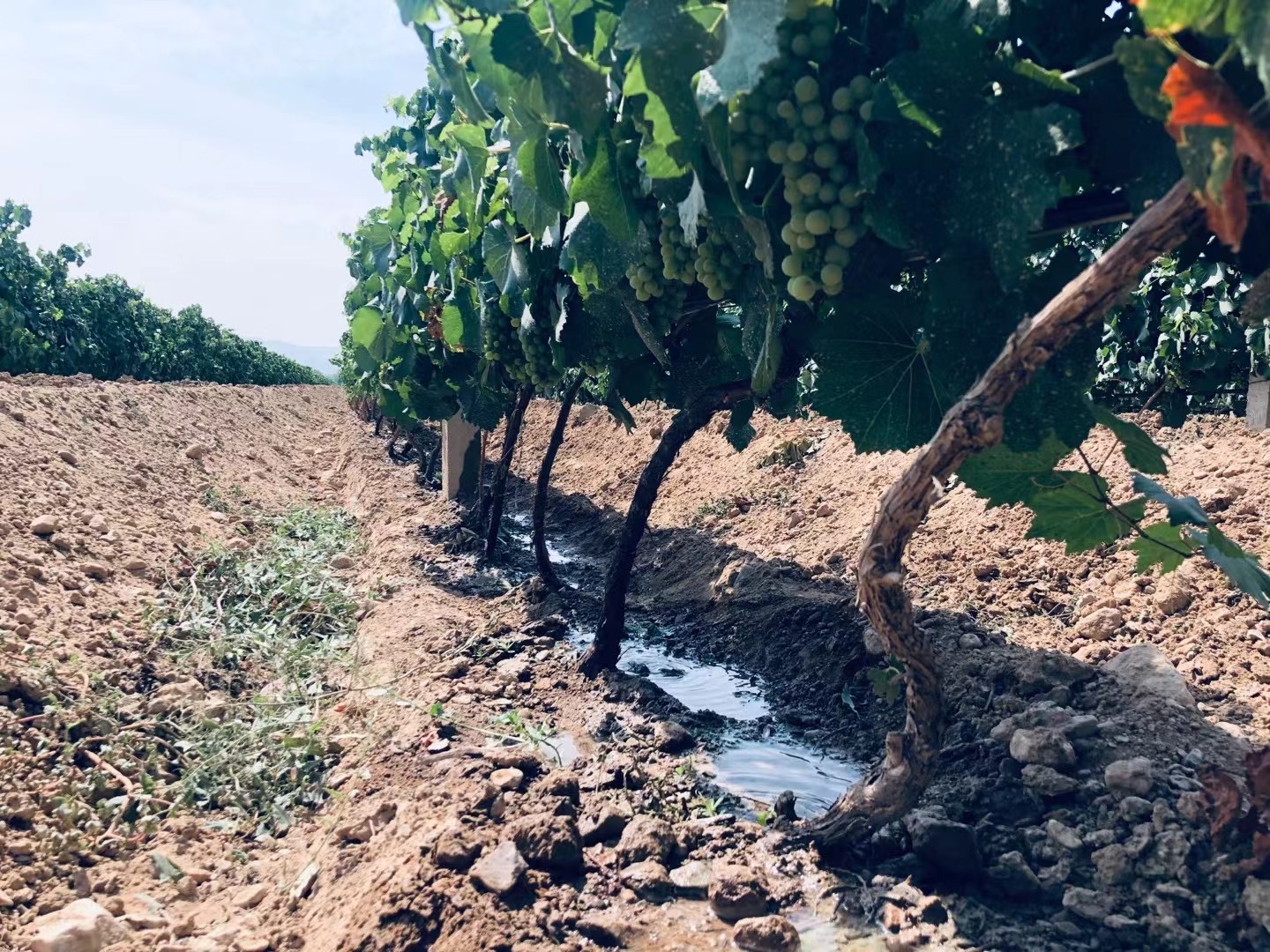
Nowadays, wine estates have their vineyards. According to the winery's size, the vineyard's size will be different, but without exception are in careful care. Wineries want to create their brand characteristics to establish a good product image, so in raw materials, wineries still prefer to develop their vineyards and save a lot of money on acquiring grapes.
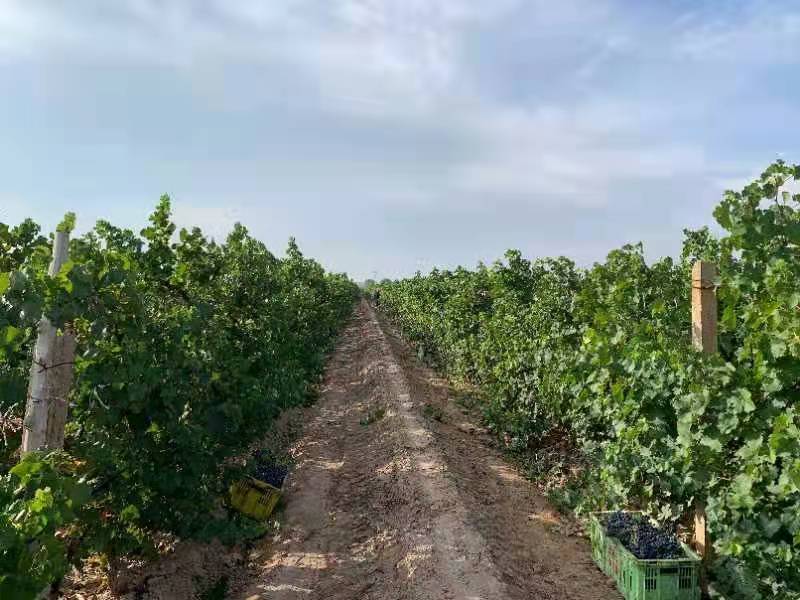
When the grapes are about to ripen, a laboratory technician will come to the vineyard with professional equipment to measure the sugar level of the grapes and determine the harvest time. A Brix spectrophotometer is usually used. Brix levels are generally controlled at 240-250 g/l.
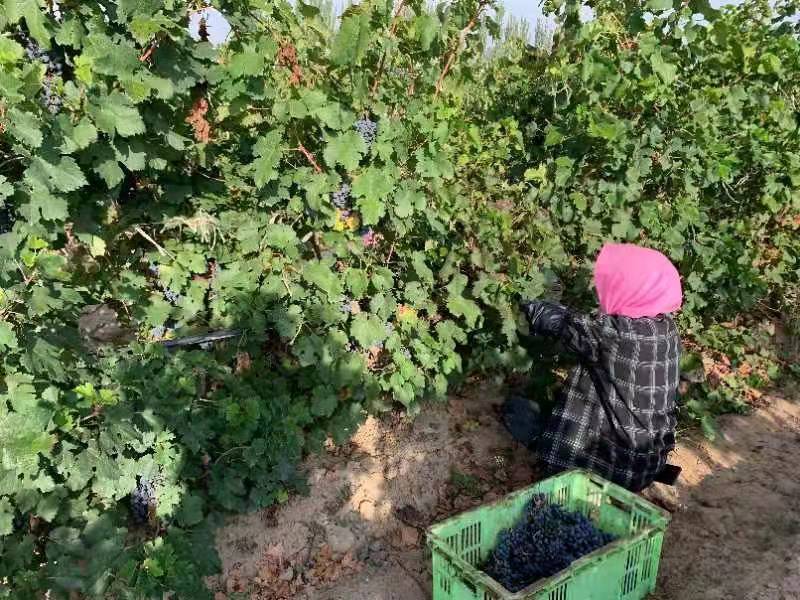
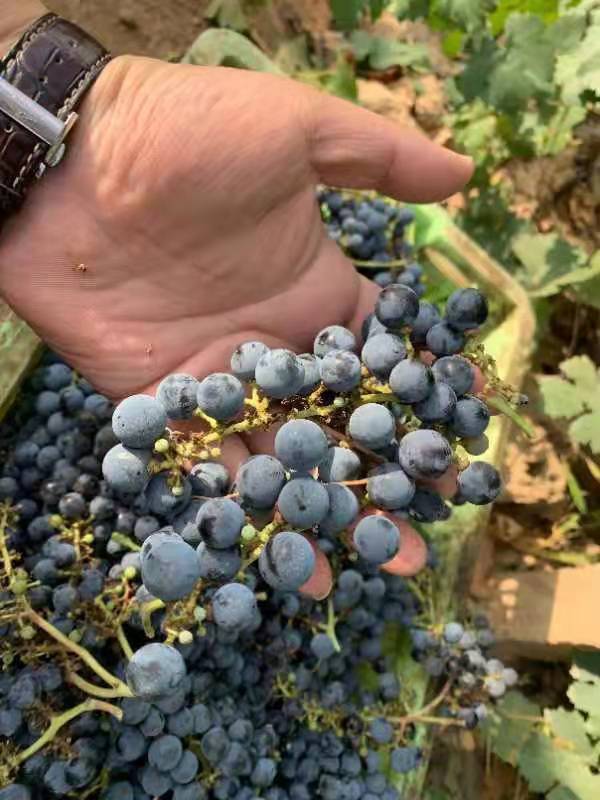
The grapes picked for wine are more minor, darker, and higher in sugar compared to our fresh grapes. However, the skin is thick, the seeds are large, and the taste is not so good. Ripe wine grapes are full of grains, brightly colored, and have a layer of "white frost" on the surface, which is the natural yeast of winemaking. When making wine, no water is used except for cleaning the fermentation tanks. Washing the grapes in the tank is a big no-no in winemaking. Washing destroys the layer of yeast, a natural winemaking yeast that every winemaker treasures. It gives your wine a more intense flavor, a change that today's artificial winemaking yeasts can't bring about. This is the time when the harvesting begins, and we enter the "pressing season."
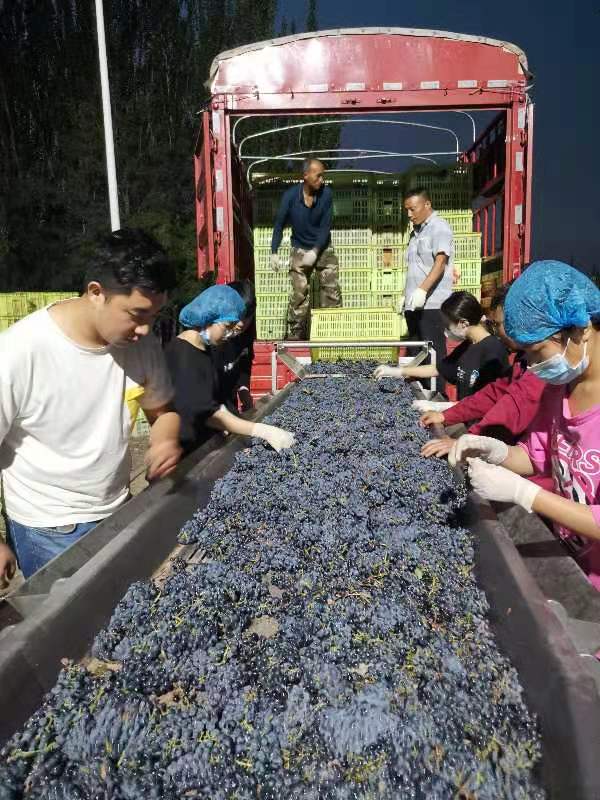
At the beginning of the crushing season, the grapes are selected by the staff and put into the fermenters. Throughout the season, all the employees of the winery work 24 hours a day. Everyone has his or her rotating position. The most muscular men unload the frames of grapes from the truck and pour them onto the drive belt. The careful employees on both sides then select the green and moldy grapes and some smaller bunches.
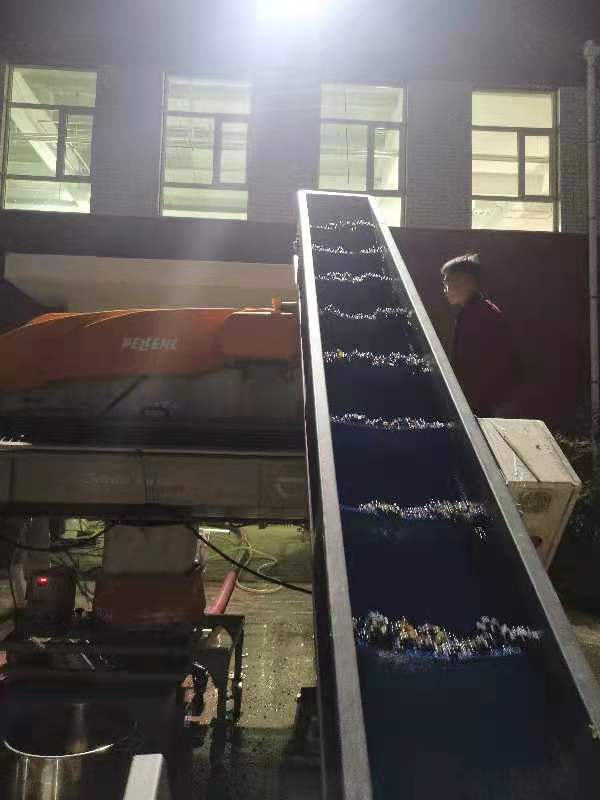
After the initial selection, the grapes enter the destemming machine. The destemming device removes the green stems from the bunches, leaves the grains behind, and enters the grain selection machine.
The grapes are pumped into the fermentation tanks with a robust screw pump. The intense front-end work continues for more than a week, and the harvest is finished when no more grapes are in the tanks.
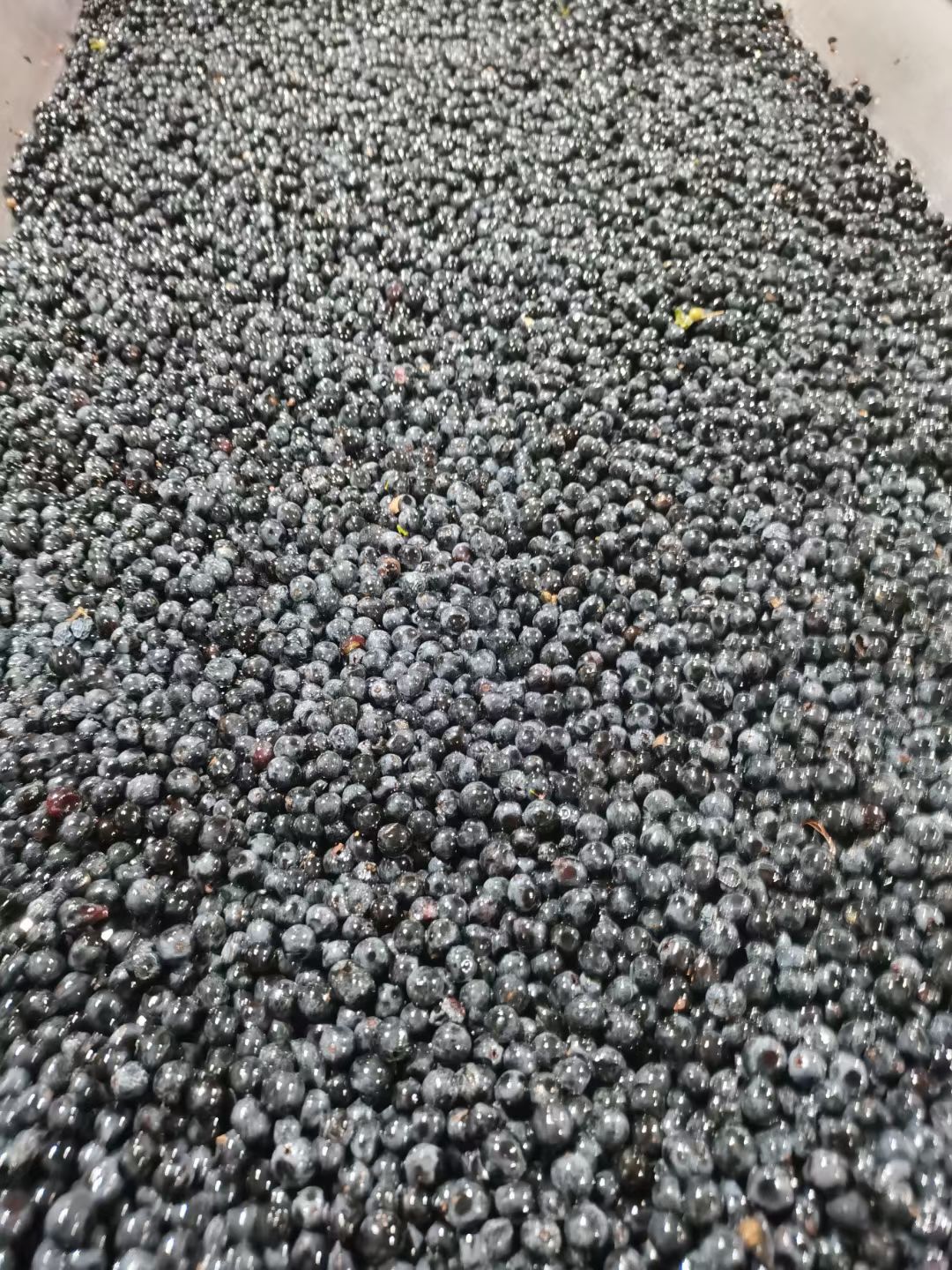
The whole process, from harvesting to sorting, is the pre-processing of the wine. The winery staff works hard throughout the season, generally working 24-hour shifts with high intensity, so if there is water in our wine, it must be our sweat.
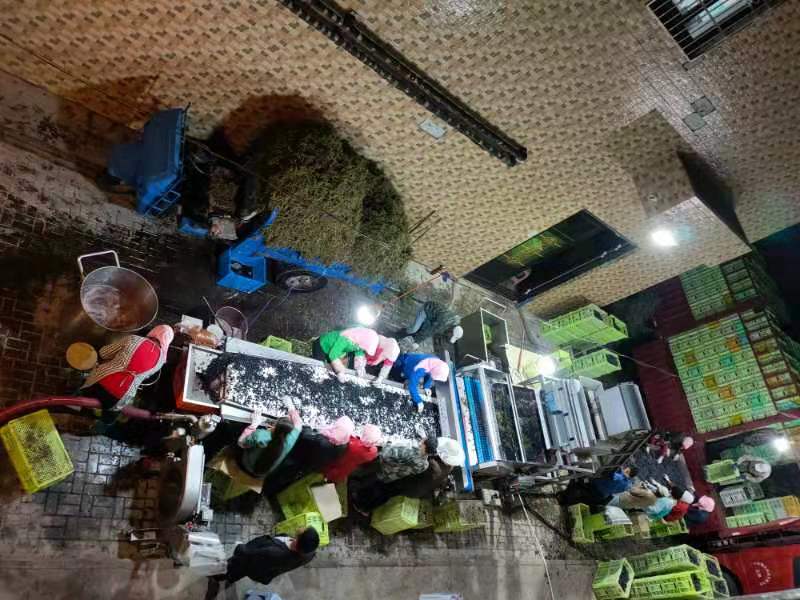
After sorting, the grapes are pumped into the fermentation tanks with a robust screw pump.
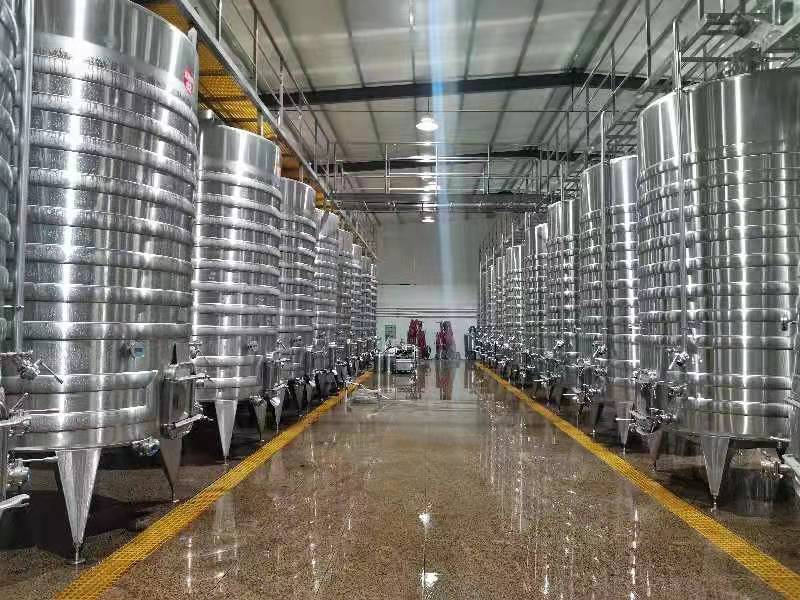
After destemming and crushing, 4 grams of sulfur dioxide (if the grapes are healthy) is added at the exit of the crusher to inhibit the reproduction of other microorganisms (1 kg of potassium sulfite in a bag, mixed with 10 liters of pure water to make a 5% SO2 solution, 800 ml per ton of grapes). Some wineries add 7.5 kg of mixed oak chips directly into the tank without adding oak chips to make the wine a little richer. The fermentation is gradually boosted by adding pectinase at three g/100 kg of grapes.
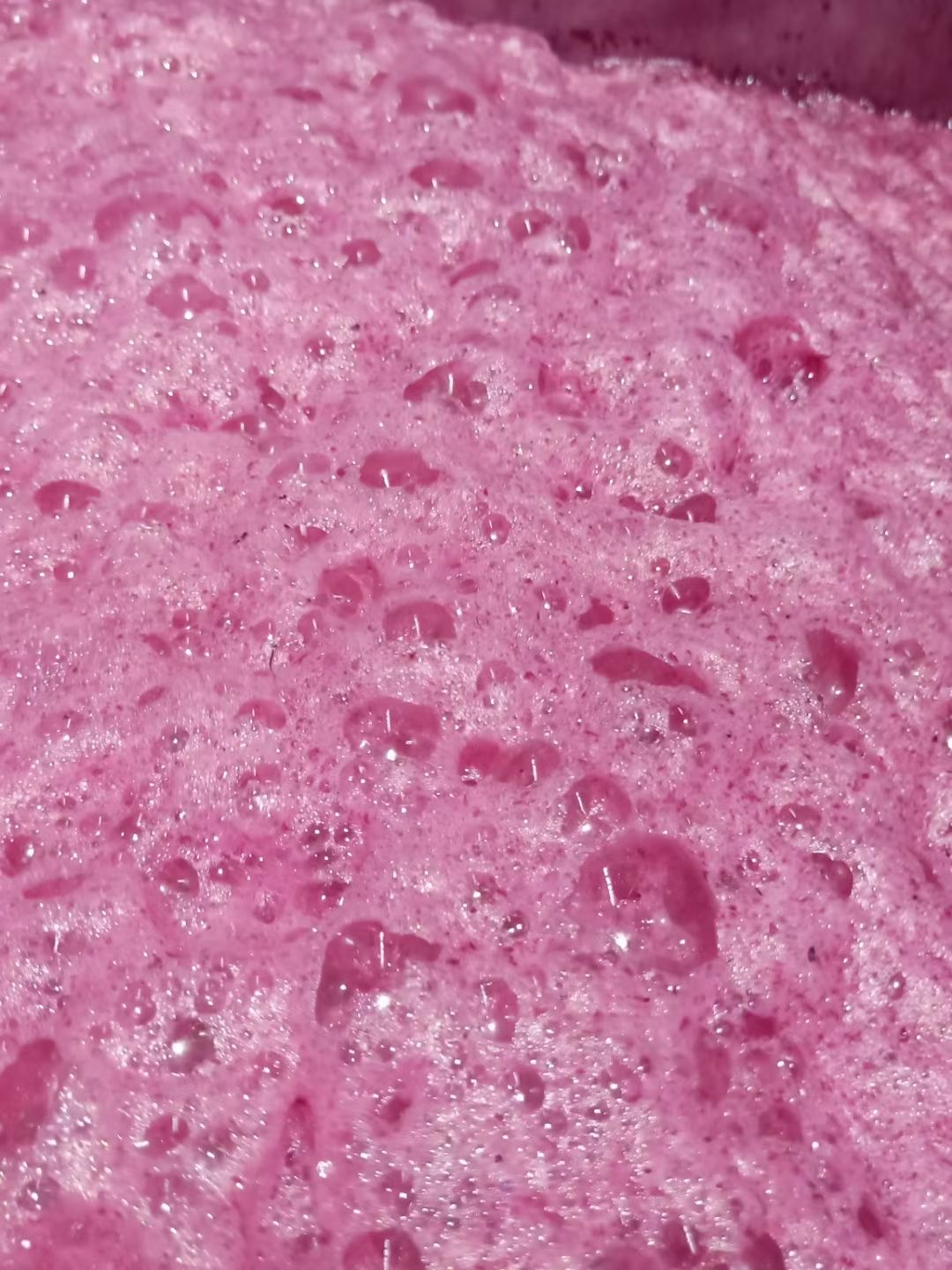
After filling the tanks with pulp, a light cycle is performed, and ten g/100 liters of "Tanin VR Supra" is added at once to enter the cold maceration phase for 2-5 days, depending on the situation and the specific gravity of the juice is measured three times a day with a gravimeter. At the same time, add 5 g/hundred liters of active dry yeast and 5 g/hundred liters of yeast fermentation aid and bring it back to 15°C. Add the active dry yeast "Zymaflore FX10" and 15 g/hundred liters of yeast fermentation aid at a rate of 15 g/hundred liters. (active dry yeast is dry brewer's yeast that is still alive)
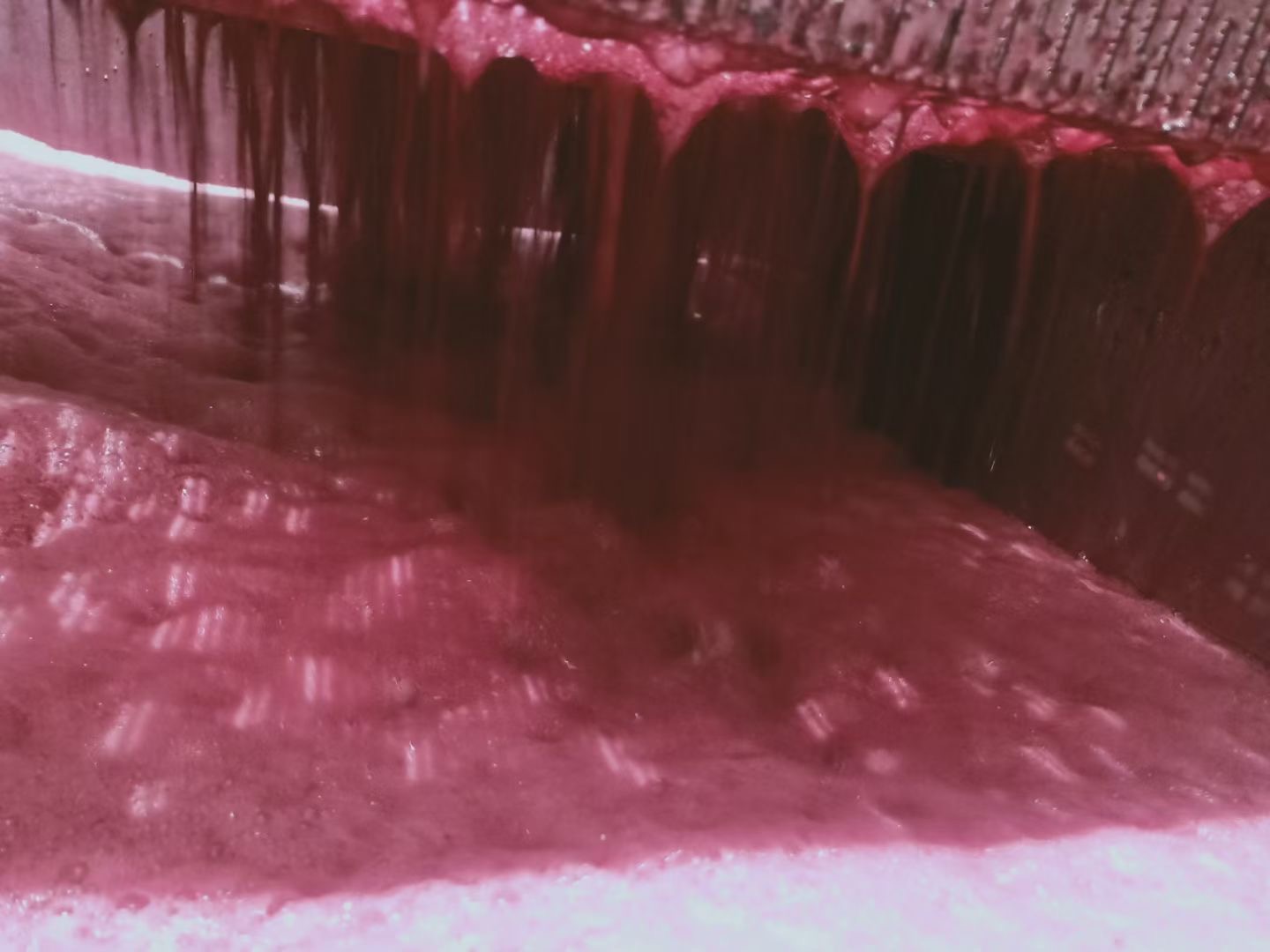
When the yeast converts sugar into alcohol, it produces a large amount of carbon dioxide, and the temperature rises. The grapes ferment very quickly after entering the tank, the juice will automatically be underneath, and the skins will be lifted and suspended above the fermenter. Due to the large size of the fermentation tank, the wine is pumped out from the bottom of the tank every two hours to prevent the center temperature from getting too high and affecting the quality of the wine and then added from the top of the tank to create a "pressure cap" effect. In the early stages, the wine is cycled frequently, but as fermentation progresses, the intervals become longer.
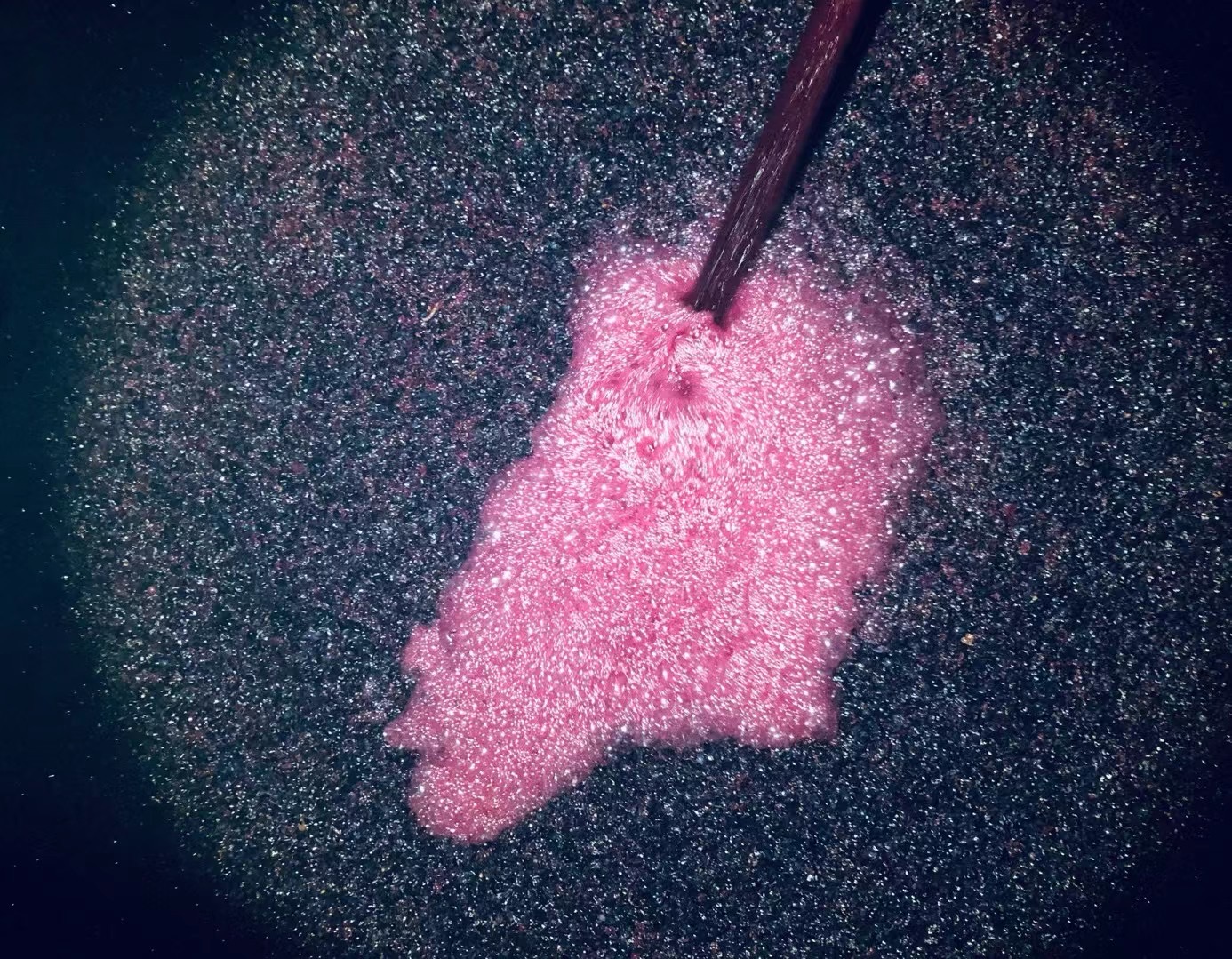
The number of cycles is determined by the specific gravity and temperature of the juice, and the cycle time is controlled by the flow of liquid pumped out. The specific gravity is 1100-1070 in the first stage of fermentation; the fermentation must be carried out once a day in the morning and evening juice cycle; the length of time depends on the size of the pump flow to determine the volume of juice cycle should be controlled at 1/2-3/2 of the total volume of liquor, the fermentation temperature at this time is appropriate to rise 2 degrees per day, the highest temperature of the fermentation tank is controlled at about 26 degrees, specific gravity 1070-1020, closed cycle to open cycle. 1020, the closed process is changed to an open revolution, and the initial fermentation is completed at this time. The open cycle means that the wine from the fermenter is pumped into an empty stainless steel tank to allow the wine to contact the air and cool down. Then it is pumped back into the fermenter, and the whole process is carried out simultaneously, pumping out while hitting the tank, during which the specific gravity and temperature will be observed generally; a 5-ton fermenter will cycle for about 10 minutes.
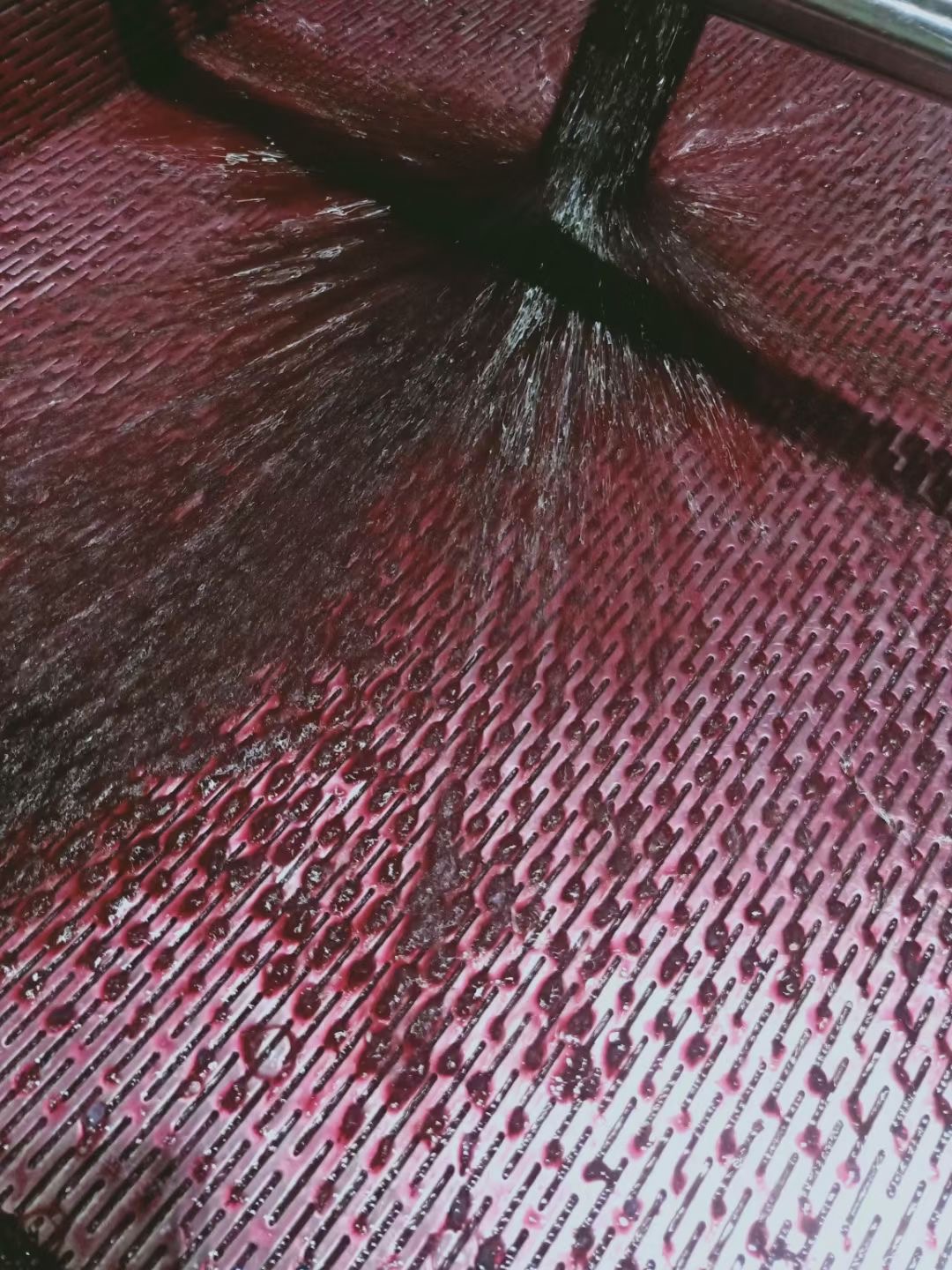
At this time and, which can be called the body of the wine, the alcohol content begins to stabilize, the sugar content is not declining, the specific gravity is stable, but at this time, the taste has a clear "sour" sense, not good in the mouth. It later will be steady fermentation, the whole fermentation process without adding other substances.
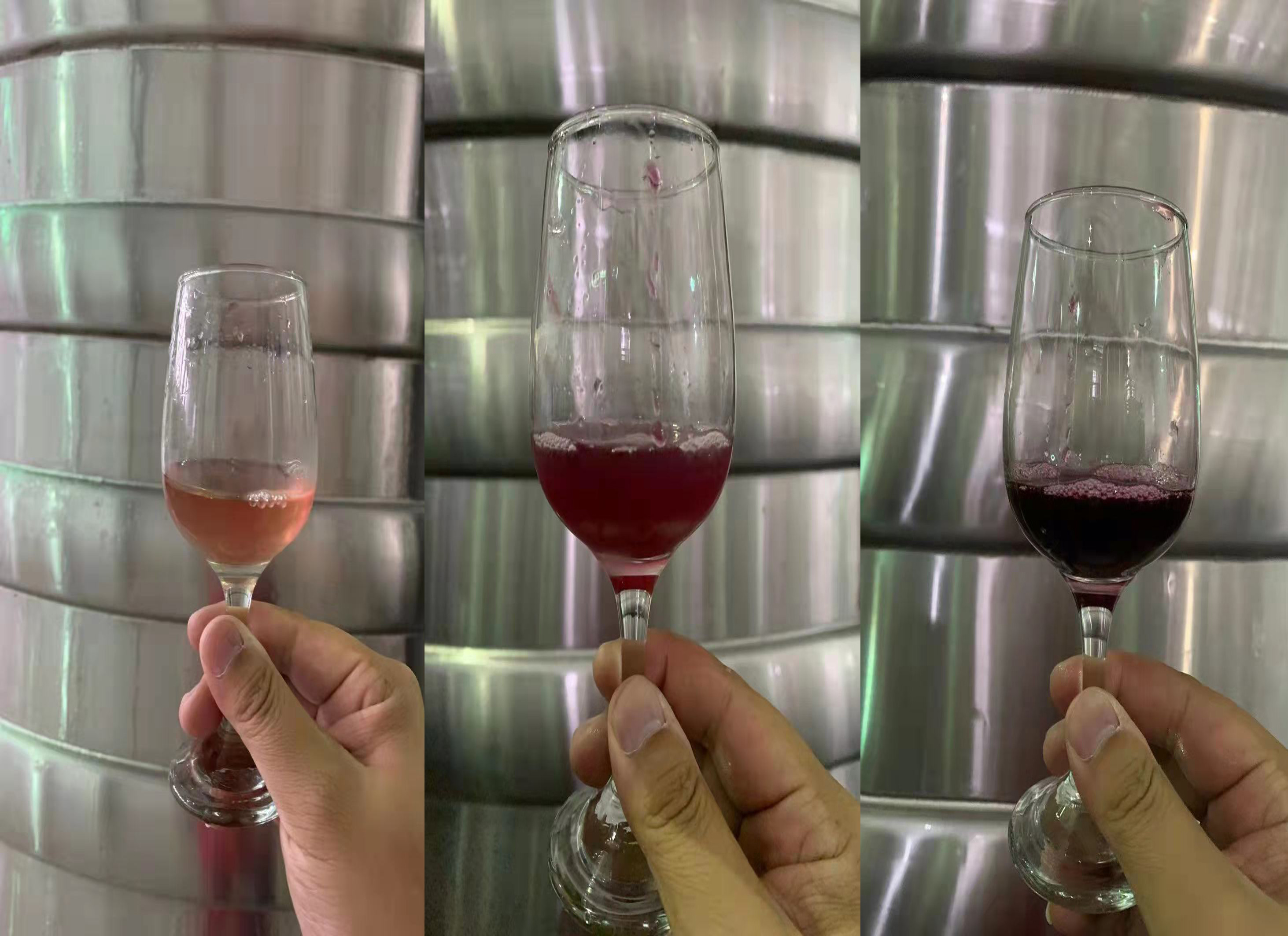
With the time in the tank, the juice is rapidly changing to wine. The liquid has less and less sugar, and since the red wine is fermented with the skin, the color of the juice becomes darker and darker as the skin is imbibed with the liquid, which is also the natural color, and no other substances are added. After the initial fermentation, the wine is pumped to another tank for stable fermentation, and the original fermentation tank is left with only the grape skin residue.
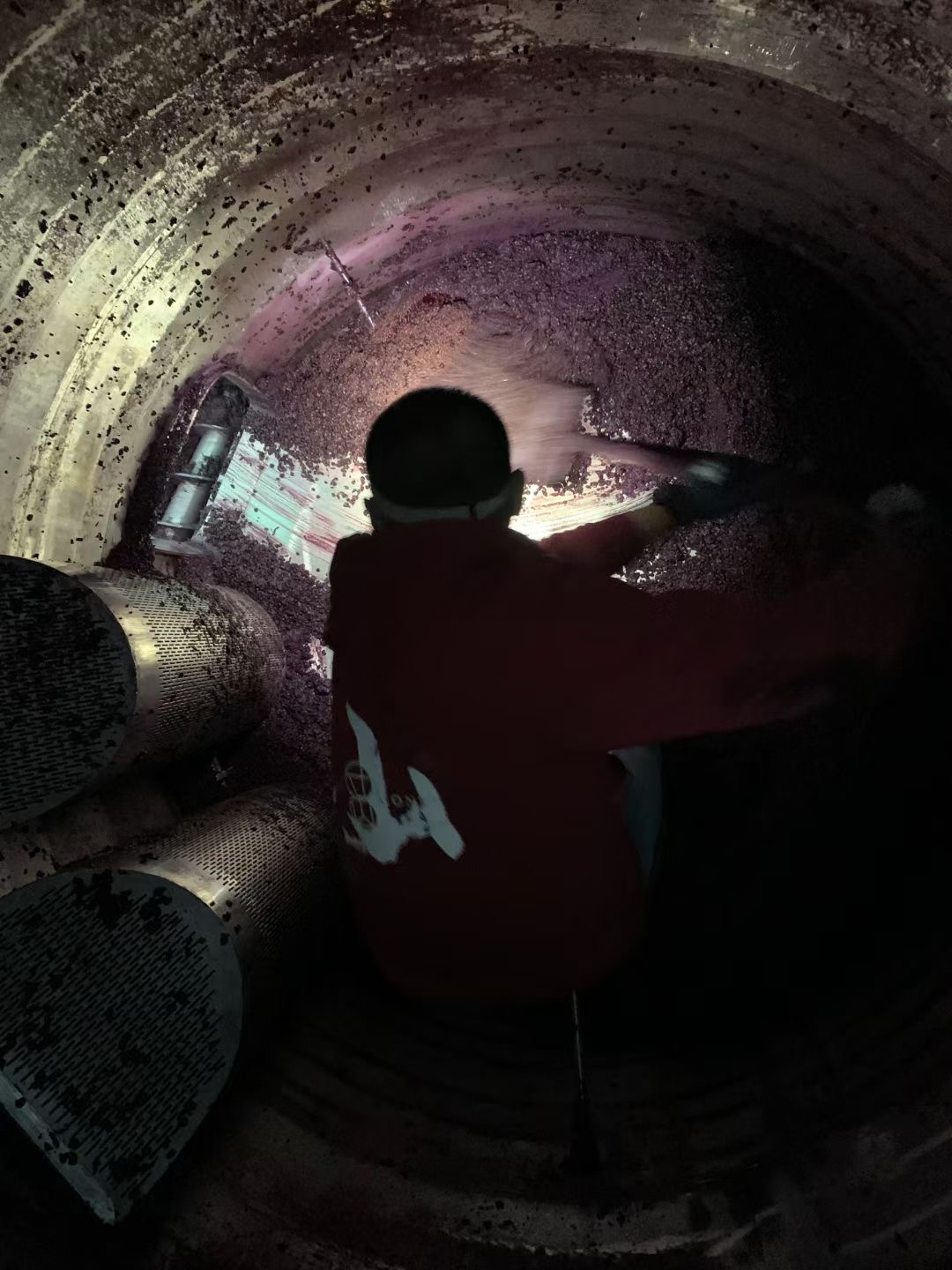
Since the entrance to the fermentation tank is so tiny that machines and equipment cannot enter, and there is no special equipment, it is still common to enter the tank manually to clean it. The high carbon dioxide content in the tank, the small space, and the enormous workload require excellent care.
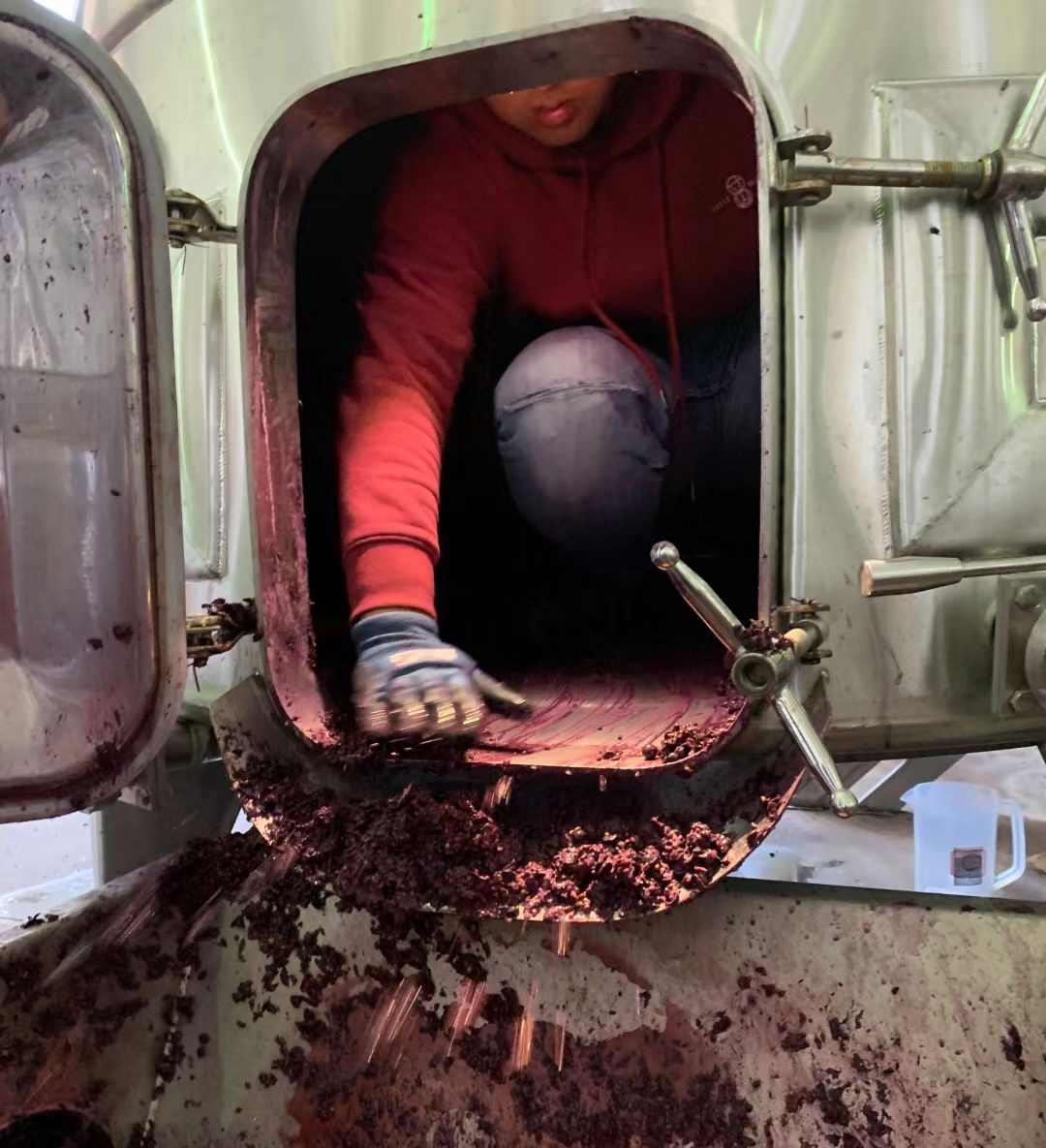
The cleaned residue also contains a small amount of wine liquid to save and facilitate the cleanup of the rubble and the benefits. At this time, we also press the cleaned pomace. A special press is used to squeeze out the residual liquid from the lees.
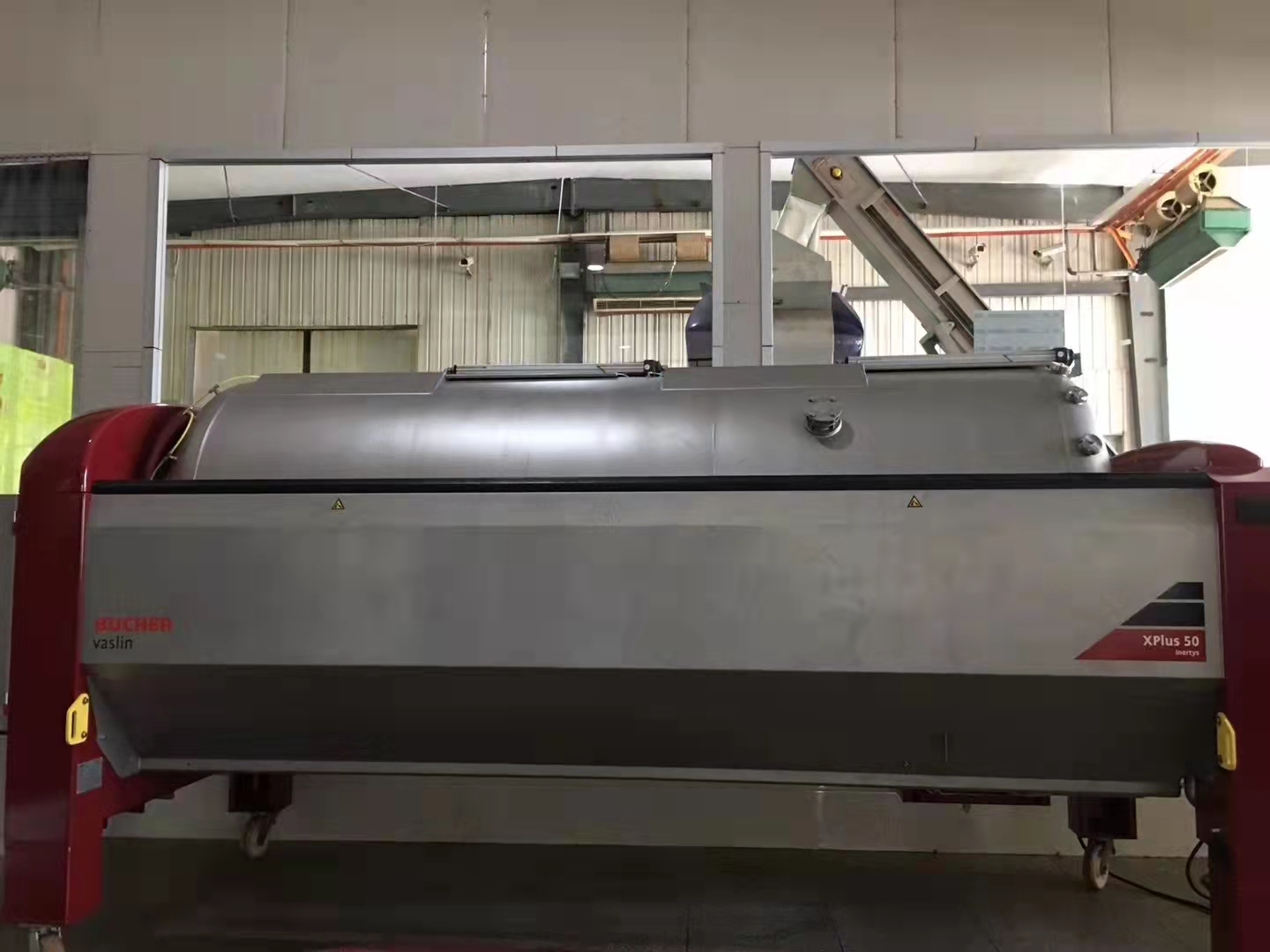
The pressed wine is stored in a separate tank, and the wine is filtered to give it a "bitter" taste, so it is sold at a correspondingly low price. Although the taste is not so good, the quality is still wine.
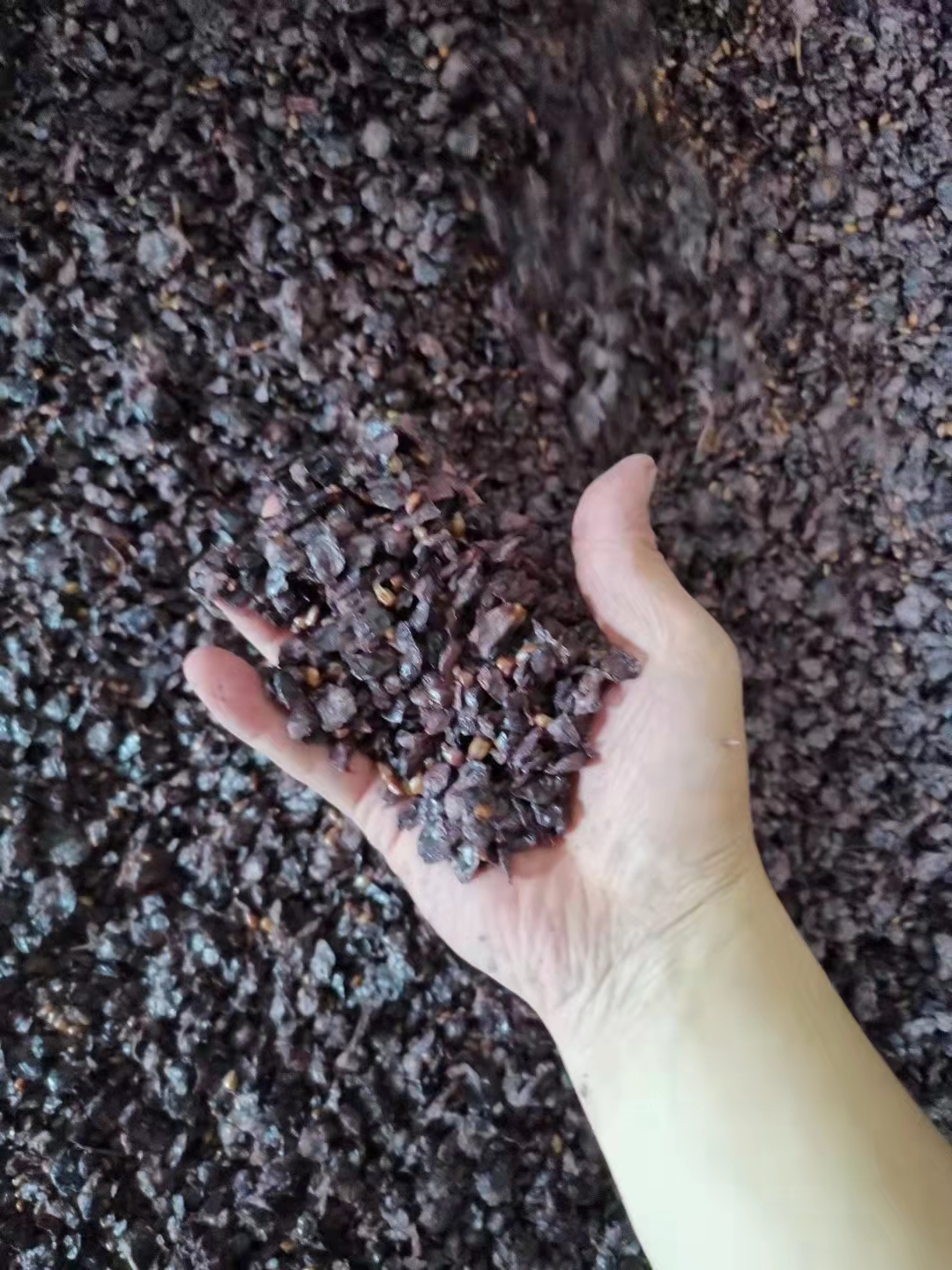
The pressed pomace is very dry, but we still dry the pomace outside in the sun like grain because the tannins or other substances in the grapes are very beneficial to the human body. The dried skins are also bought by companies specializing in cosmetics and other things.
Stable fermentation of wine means that the grapes are stored in separate tanks, and the wine is wholly stabilized before it is filtered and bottled. No other substances are allowed to be added to the wine during fermentation. Making wine is like making food; it is also a competition, with 7 points for the grapes and 3 points for the vinification. In the case of grapes (grape quality is not very different), your process is not good, and the other wineries' wine is the easiest to control. Only to ensure that the raw materials and processes are suitable, the wine ceiling is high to go more than who is better. Of course, each chef has different skills and processes, and the flavor of the dishes will vary. The winemaker is like a chef who can make the grapes in his hands to achieve a qualitative change in taste buds.
The blended wine also does not know when the taste has changed because the word "blended" has changed the taste. In the wine industry, our blending is a compliment; it is like a work of its own, used to achieve the best in the senses of a way. It's just blending different varieties of wine to achieve harmony on the palate and a more stable and easy-to-drink wine. For example, the more famous "Cabernet." It is not like a particular Cabernet Sauvignon or Merlot wine, but three together to achieve a balance.
This is the end of the red winemaking process; based on corporate control data is very strict but also clean and hygienic, so it is not recommended for individuals to make wine. There is no data control; make your wine microorganisms easily exceed the standard, the grapes are high in sugar, very suitable for microbial reproduction, individuals do not have a method to inhibit the reproduction of other bacteria or do not quickly try.
